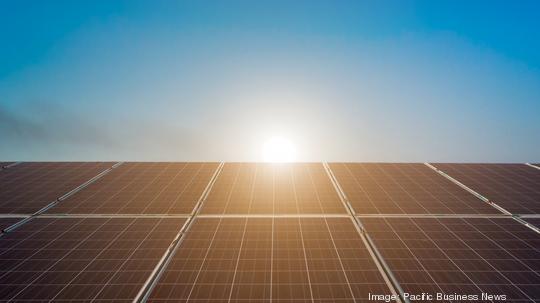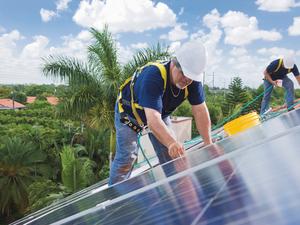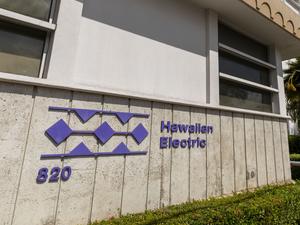
The time of the distributed power plant has officially arrived in Hawaii.
Homeowners' remote solar battery storage capabilities are being harnessed in new ways on Hawaiian Electric Co.'s grids on Oahu, Hawaii Island and Maui with the help of a third party, California-based Swell Energy.
As approved by the Hawaii Public Utilities Commission, HECO will pay Swell $25 million over the next five years to manage up to 80 megawatts and add grid service capabilities — such as the ability to store excess energy into customers' batteries, as well as draw energy out at peak consumption hours to help meet demand.
Swell's Home Battery Rewards program launched officially on Sept. 9, although it had already enrolled about 150 people in the program by then, Suleman Khan, Swell CEO, told Pacific Business News.
Swell's distributed, or virtual, power plant is slated to consist of roughly 6,000 batteries on the three islands — 4,000 on Oahu, 1,500 on Hawaii Island and 500 on Maui. Ratepayers who sign up can receive roughly $40 monthly per battery as a credit toward their HECO bill, though the amount varies based on their battery or batteries' capabilities. One battery could net a participant between $407 to $682 per year and about $2,000 to $3,400 over the life of the five-year program.
Swell has two distributed power plants in California, and another in New York. None of those places have the level of solar adoption already seen in Hawaii, which Khan felt was a natural fit for such a virtual power setup.

Oahu in particular has a high PV battery deployment rate. Solar companies RevoluSun on Oahu and Rising Sun on Maui and Hawaii Island are working with Swell on fulfillment at this stage, although more partners are expected to be announced as the program progresses. Swell also expects to itself offer financing for batteries to customers, a large part of its business model.
"Hawaii’s super interesting because of all these [space] constraints and also all this solar that already exists on the island," Khan told PBN. "Getting a distributed power plant going for HECO certainly felt like a no-brainer, and it was basically HECO [that] went out and asked folks to respond to this challenge. Our proposal and bid got accepted, and we are now in the process of launching this.
"The ultimate goal there is to bring down the cost of ownership to the customer. And our way of doing that is saying, 'look, without taking much away from you, we can bring you money by utilizing these [batteries] further [and providing services to the grid]."
HECO introduced in July its own Battery Bonus Program that customers with PV batteries can sign up for to be compensated for a two-hour window of grid demand in the evening. That 50 megawatt program and Swell's Home Battery Rewards are mutually exclusive.
HECO is in need of new sources of reliable power ahead of the scheduled shutdown of Oahu's 180-megawatt AES coal plant in September of 2022.
“Existing and new solar-plus-storage customers can now get more value from their home energy system with advanced grid service programs like Home Battery Rewards,” said Yoh Kawanami, HECO director of customer energy resources operations, in a statement. “We are at a turning point in Hawaii for advancing the capabilities of all residential solar and batteries already deployed and being installed in the future. By harnessing the collective power in our homes, we enable a more affordable and resilient Hawaii that also helps us meet our 100% renewable energy goals by 2045 or sooner."
Swell has software that communicates with HECO, interfacing with its systems so that the utility can call upon the distributed resources as needed, or, for example, send excess wind energy into customers' batteries so as not to overload the grid. It also occasionally can provide what's called "frequency response" a couple of times per month to mitigate energy imbalances.
PBN asked Khan if there was any drawback to a ratepayer who sacrifices autonomy with their battery system, such as curtailment of a battery — and a customer's savings in that moment — if there is too much power on the grid.
Khan allowed that those moments will happen but said the big-picture financial benefit to the participant outweigh those instances.
"The homeowner doesn’t feel it when we dispatch the battery. Basically, they’re going off the grid without knowing it, when the utility needs them to," Khan said. "What we’re doing is making sure when we’re doing that, we’re not sacrificing much of their savings. To the extent we do sacrifice their savings ... the payments that we make them more than compensate for that."
Customers can leave the program without penalty at any time, Swell Energy said.








